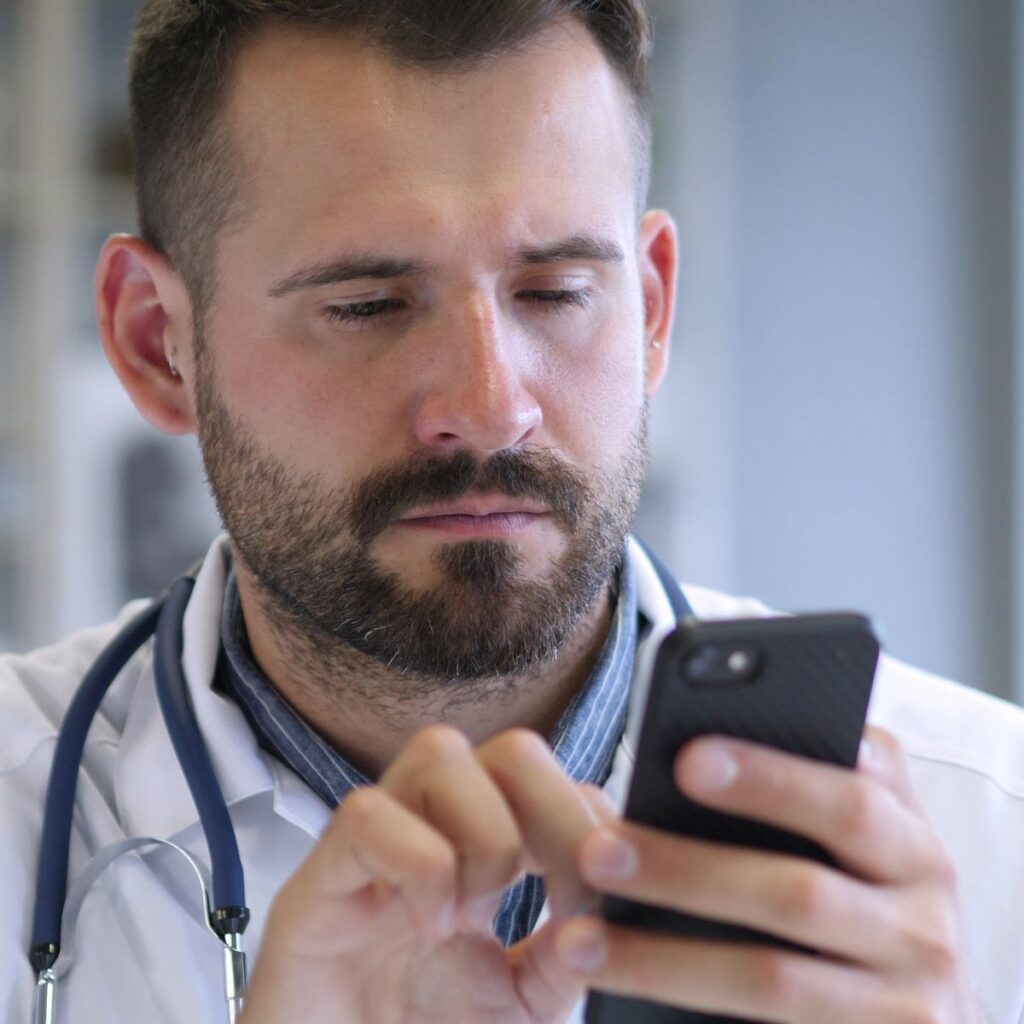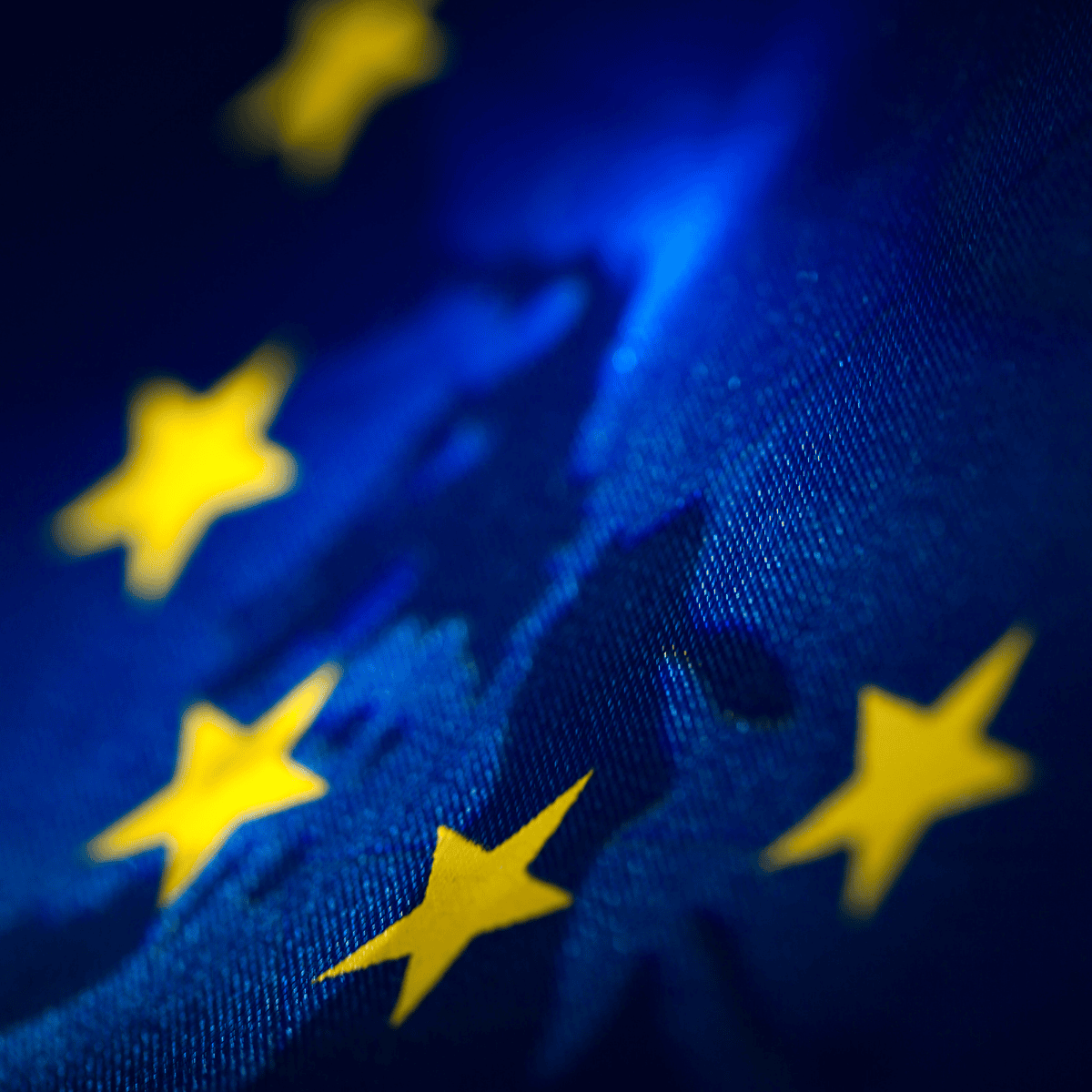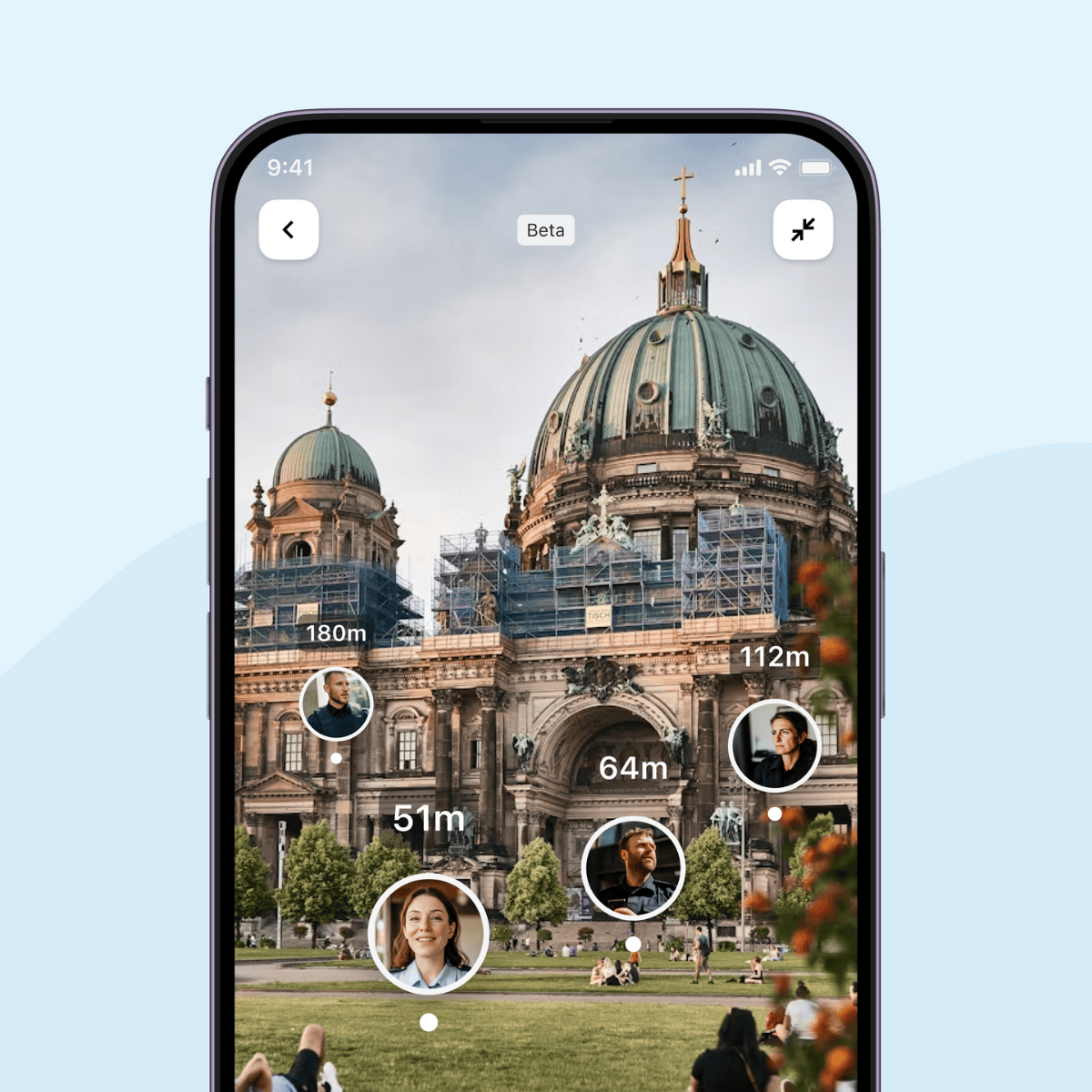Communication in the healthcare sector is stagnating. In hospitals, rehabilitation centers, nursing homes and care facilities for example, it is highly fragmented and characterized by outdated technologies, data silos and media disruptions.
Yet fast and simple communication is essential to improve patient care and relieve the burden on nursing staff. This is where digital communication solutions, above all a business messenger, show their potential.
Following the guiding principle of the telematics infrastructure (TI), business messengers not only connect employees by enabling real-time communication via text, voice, and video. They can also network third-party systems with existing IT and solutions across institutions.
Status quo: Consumer messengers are everyday communication tools
The workforce in hospitals, rehabilitation centers, nursing homes, and care facilities works predominantly on the move.
That’s why it needs a digital communications solution available as a mobile and desktop app, and can also be used for internal crisis communications.
Obvious options are consumer messengers such as WhatsApp, Signal, or Telegram.
In fact, using so-called consumer messengers, developed for private purposes, is common practice among physicians. A study by the European Heart Rhythm Association (EHRA) shows that around 90% of participating physicians routinely send and receive medical data via messenger; 80% of them via WhatsApp.
However, privacy and security laws prohibit the use of such unauthorized apps. Consumer messengers are not suitable for compliance-compliant information exchange in the medical field.
As shadow IT, they offer gateways for unauthorized access and hacker attacks that, in the worst case, cost human lives.
Alternative to WhatsApp & Co.
A messenger for hospitals and care facilities must not only be GDPR-compliant, but also fulfill numerous technical security requirements:
End-to-end encryption, anonymization of user data, and processing via servers in Germany, preferably in an IS0-27001-certified data center or on-premise hosting.
In addition, the app should be centrally controllable via a professional administrator dashboard and allow the distribution of individual users and rights.
It is also important that it has open interfaces that allow third-party systems to be connected as needed. Ideally, the messenger has an interface to HL7 FHIR (Fast Healthcare Interoperability Resources). This communication standard enables smooth data exchange between different systems (interoperability).
At the same time, it is essential that the app can be operated intuitively via a clear user interface.
Relevant business functions geared towards typical use cases in healthcare are also an absolute must.
Eight trend-setting use cases for digital communications in healthcare
The following scenarios show how a secure messenger can support healthcare communications:
1. Sharing information about patients
A business messenger can automatically create a patient group chat that includes nurses and doctors.
Such a chat enables easy sharing of photos, videos, and documents. It also allows the care team to discuss via text and voice messages in real time, for example, when the next treatment is scheduled or when the medication dosage changes.
Full encryption and integrated image editing functionality ensure the security and anonymity of patient data and smooth healthcare communication.
2. Shift changes
If the entire team uses a group chat, handover processes can be easily coordinated. This ensures that all relevant information is passed on in a structured and seamless manner.
Shift schedules can also be managed digitally and shared with colleagues.
In addition, logging in and out with different accounts or, in the case of larger institutions, connecting the app to the UEM system enables multi-user capability, so several users can use the same mobile device. This, too, is part of modern healthcare communication.
3. Emergency situations
Alarms are essential to inform selected teams or the entire organization during a critical incident, such as a patient emergency or fire alarm.
Acknowledgement features, signal tones, color highlighting, and read receipts facilitate awareness and coordination.
A live location feature can transmit the live location of nursing staff involved. For stationary care, an IoT interface connected to a medical meter or emergency button allows the nursing staff in charge to receive the triggered alarm directly to their mobile device.
4. Family and patient queries
Using a WhatsApp for Business interface, family members and patients can communicate with selected people from healthcare institutions. This makes it easy to make inquiries and quickly obtain information.
Hospitalized patients can also use this interface, for example, to make automated queries about the hospital menu and select meals via chatbots.
5. Exchange with institutions and service providers
Two technological approaches enable smooth communication in the healthcare sector:
- Secure guest access enables, for example, volunteers to join chat groups. The use of the app is not limited.
- Interoperability allows digital exchange across institutional boundaries, so autonomous healthcare organizations can exchange information regardless of location and time – and all via a single business messenger.
6. Integration in Hospital Information Systems and Electronic Medical Records
When a new patient is admitted, an electronic medical record is created immediately. In the hospital environment, this is usually also transferred to a digital information system – for example, the hospital information system (HIS).
A business messenger can also be easily connected to databases, in-house developments, and CRM/ERP systems.
For example, a chatbot can then be used to
- make direct queries in the HIS system,
- automatically inform nursing staff about updates in the patient file, or
- store photos relating to a specific patient case in the electronic patient file.
The information collected, such as patient data, reason for admission, assigned ward, and planned examinations and treatments during the stay, is used to assign the patient to an appropriate care team.
However, medical technology, robots, alarm systems, and IoT can also be linked to a business messenger like Teamwire.
For example, nurses could be automatically alerted via messenger if a measuring device exceeds a certain threshold or a patient presses an alarm system’s emergency button.
The possibilities for connections and integrations are very broad and play an important role in the digitalization of hospitals and healthcare companies.
Taking communication in the healthcare sector one step further, it would be conceivable to access medical documentation before a patient is admitted.
By getting data to the ward, the doctor on duty, or the central laboratory faster, treatment processes can be accelerated, and patient safety can be increased. This also helps prevent information loss that can occur with handwritten notes.
7. Visit
All patient data and documentation can be accessed via a mobile device by linking electronic patient records with a messenger.
New information can be added via the input mask of a bot interface. The changed data can then be stored in the corresponding information system.
Here, the application scenario for communication in the healthcare sector can also be taken further:
It is conceivable that when a patient is admitted to a medical or rehabilitation facility as an inpatient, he or she will receive a digital device, such as a tracking wristband, which includes a binary code that stores all data and examination results. These can be stored directly in the electronic patient record and ultimately accessed via messenger.
8. Ordering supplies
If supplies such as hypodermic needles, swabs or bandages need to be reordered, this can be done directly via business messenger.
To do this, the employee enters the quantity to be ordered into a message interface that is connected to the hospital’s purchasing department and the corresponding ordering system. The person responsible for purchasing then receives information to check the order.
Other scenarios for healthcare communication, such as partially or even fully automating ordering processes, are possible here.
Conclusion: A business messenger can save lives
The right communication in the healthcare sector is the key to sustainably improving patient care and increasing nursing staff satisfaction.
Today, business messengers already enable all employees, all systems, and even all institutions to communicate directly, in real time, in compliance with data protection laws.
Our case studies show how Teamwire can be used in healthcare and how the software improves communication.
If you want to learn more about Teamwire, please contact us.




